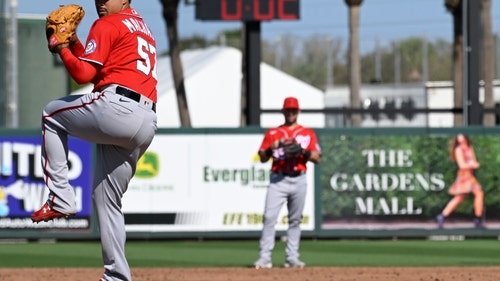
Boston Red Sox: Impact of rising luxury tax in new CBA

Major League Baseball has a new collective bargaining agreement in place that includes changes to the luxury tax that could effect the Boston Red Sox.
Peace has been restored! Well, maybe not World Peace, but at least peace in the world of baseball, which makes up a significant part of our world as enthusiastic fans of the Boston Red Sox.
Major League Baseball and its player’s union struck an agreement Wednesday night on a five-year collective bargaining agreement that will run through the 2021 season. The new deal prevents a potential work stoppage and allows teams to get back to business.
The Red Sox were among the teams in a holding pattern as they awaited the outcome of a new deal as it pertains to changes to the luxury tax threshold, which will be a factor in shaping the team’s budget for spending this winter. Now that we know that the threshold will be rising incrementally over the next five years, Dave Dombrowski has free reign to start splurging on free agents, right? Not so fast.
First, let’s look at what the tax line is expected to look like over the duration of this new agreement. The tax will jump from $189 million to $195 million next year, then to $197 million in 2018, $206 million in 2019, $209 million in 2020 and $210 million in 2021.
Before we get too excited about the idea that the Red Sox can spend more with a higher tax line, we have to consider that these changes don’t necessarily create more wiggle room for teams that are already spending over the tax. Boston’s payroll was over $197 million in 2016, which exceeds what the tax for next season will be.
This is vital to note because with an increase in the budget comes an increase in the penalties for going over those limits. Teams that go over the line are hit with an additional 20 percent tax for first-time offenders, 30 percent for second-time offenders and 50 percent for third-time offenders.
Wealthy owners have scoffed at similar penalties in the past, but may be more hesitant to open their wallets with the implementation of new surtaxes for those teams that go well beyond the threshold. A 12 percent surtax is charged for teams that go between $20-40 million over the line, with increasingly draconian penalties for teams that spend beyond that which could result in as much as a 90 percent tax!
Red Sox ownership has shown a willingness to go over the tax when they deem it appropriate, but it’s not a routine they want to be caught in every year because of these repeater penalties and they’ll want no part of the harsher surtax for blowing by the threshold. John Henry has deep pockets, but he’s no fool. While he’s willing to spend his money to keep his team competitive, he’s also a businessman at heart and subjecting himself to such steep tax penalties isn’t good business.
More from BoSox Injection
Boston has shed some salary from their books, most notably David Ortiz‘s $16 million and another $16 million or so that free agents Koji Uehara, Junichi Tazawa and Ryan Hanigan made last season. The team currently has just north of $160 million committed to 2017 contracts, per Baseball Prospectus. That figure drops below $150 million when you subtract Allen Craig, who was outrighted off the 40-man roster last May – meaning the team still has to pay him but he no longer counts toward the luxury tax.
That puts the Red Sox approximately $45 million below next year’s tax, but that figure only accounts for nine players. We still need to add the salaries of the arbitration eligible players, which could add nearly $25 million to the payroll based on projections from MLB Trade Rumors. Then tack on at least another half dozen or so players that fill out the roster making at least the major league minimum, which also increases incrementally over the next few years, starting with $535,000 next year. Something tells me some of the pre-arbitration eligible players might get a bit more than the minimum, as they might want to keep a guy like Mookie Betts happy with a more generous offer while he remains an enormous bargain.
You can see how that available space under the tax gets eaten up quickly. Even after accounting for the salary falling off the books, raises for other players on the roster push the payroll back in the neighborhood of $180 million. The Red Sox will have some room to operate, but can’t afford to splurge on a player like Edwin Encarnacion, who will demand over $20 million per year, without going over the tax line for the second consecutive season.
Dombrowski should soon spring into action now that he’s aware of the parameters he’s working with, but don’t expect a major splash. The focus will be on adding to the bullpen by adding a setup man to handle the eighth inning, which shouldn’t be a position that is going to break the bank. If they add a hitter to fill the designated hitter void then their targets will be veterans open to short term deals, such as Carlos Beltran or Mike Napoli. Even if that pushes them over the tax for 2017, avoiding expensive long-term deals will help the Red Sox brass control future payroll to prevent those steep repeater penalties and stay far away from the more punitive surtax.
In the long run the rising tax line is a blessing for the Red Sox, who will have to start thinking about locking up their young core over the duration of this new CBA agreement. It works out nicely that the tax line peaks in 2021, the first year Betts is eligible for free agency.
Increasing the budget may not offer much immediate relief for the Red Sox, but the new luxury tax rules can be viewed as a positive in the long run.
This article originally appeared on





